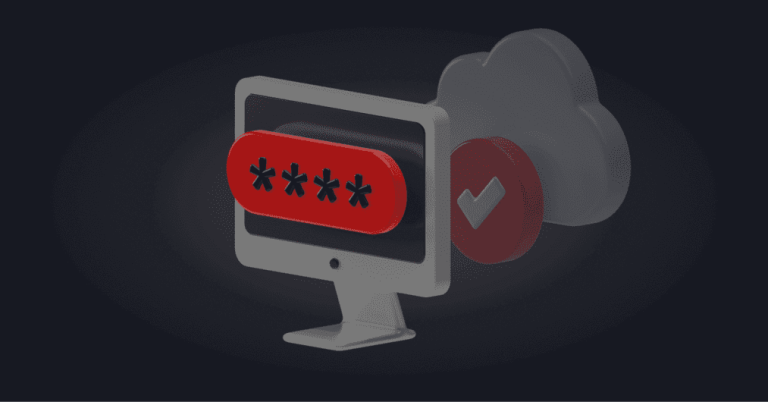
¿Cómo crear una criptomoneda?
Contenidos
En los últimos años, las criptomonedas han transformado por completo la industria financiera. Los usuarios disfrutan de métodos seguros y transparentes para intercambiar valores en línea, sin usar fondos fiduciarios. En 2009, se lanzó la primera criptomoneda, Bitcoin. Tras su expansión, se han lanzado muchas otras monedas y tokens.
Ahora incluso puedes lanzar tu propia criptomoneda. Parece más accesible que nunca.
Así que, ahora, para quienes estén interesados en generar criptomonedas, es momento de aprender todo el proceso. Exploraremos cuál es el enfoque correcto para comenzar y cómo configurar su blockchain. También cubriremos aspectos esenciales de la creación de criptomonedas, como la seguridad y el marketing.
Entendiendo las criptomonedas y blockchain
Antes de continuar, debes aprender los fundamentos de las criptomonedas. Después, podemos pasar al proceso de desarrollo.
Las criptomonedas son activos digitales seguros protegidos por criptografía. Se utilizan para registrar transacciones de forma transparente. A diferencia de las monedas tradicionales emitidas por gobiernos, las criptomonedas dependen de una red de nodos para verificar y mantener el sistema. Estas redes se utilizan para verificar y registrar transacciones.
Monedas
Estas tienen su propia cadena de bloques independiente. Las monedas funcionan como activos nativos de sus propias redes de cadenas de bloques. Por lo tanto, desempeñan un papel crucial en el procesamiento de transacciones, la seguridad y la gobernanza de la red. A diferencia de los tokens, requieren una infraestructura de cadena de bloques completamente nueva. Por lo tanto, es necesario diseñar un mecanismo de consenso, configurar nodos y garantizar la descentralización.
Debido a esta complejidad, las monedas generalmente se crean para proyectos a gran escala que apuntan a introducir nuevas innovaciones en blockchain.
Fichas
Los tokens se basan en cadenas de bloques existentes, lo que facilita y abarata su creación. Se utilizan ampliamente en las finanzas descentralizadas (DeFi). Al no necesitar una nueva cadena de bloques, su desarrollo requiere menos tiempo y esfuerzo.
Los tokens se basan en contratos inteligentes para definir su funcionalidad. Pueden tener diferentes propósitos.
- Tokens de utilidad que otorgan acceso a una plataforma.
- Los tokens de seguridad representan activos del mundo real.
- Los tokens de gobernanza permiten a los titulares participar en las decisiones del protocolo.
Los tokens se benefician de seguridad y liquidación integradas, ya que operan dentro de un ecosistema de cadena de bloques establecido.
Tanto las monedas como los tokens tienen mucho que ofrecerte. Sin embargo, la elección final depende de los objetivos y la experiencia técnica de tu proyecto.
Elegir el enfoque adecuado
Crear una criptomoneda puede seguir dos caminos principales: construir una nueva blockchain o usar una existente. Además, se requiere experiencia técnica y objetivos a largo plazo. Desarrollar una nueva blockchain será adecuado para ti si buscas innovación y plena autonomía.
Crear un token suele ser la opción preferida si buscas velocidad y una integración sencilla.
Construyendo una nueva cadena de bloques
Esta opción es ideal para quienes desean un control total sobre su red, su mecanismo de consenso y sus funciones. Sin embargo, requiere conocimientos avanzados de programación y una gran cantidad de recursos. Deberá desarrollar protocolos de blockchain, configurar nodos y establecer mecanismos de seguridad.
Creación de un token en una cadena de bloques existente
Puedes crear tu token en un contrato inteligente en otras plataformas. Los tokens se pueden programar para diversas funciones. Por lo tanto, impulsar aplicaciones descentralizadas (dApps) y habilitar recompensas por staking son solo dos de las opciones.
Definiendo el propósito de su criptomoneda
Toda criptomoneda exitosa tiene un propósito claro. Antes de desarrollarla, considere:
- ¿Qué problema resuelve tu criptomoneda?
- ¿Quién es el público objetivo?
- ¿Se utilizará para pagos, gobernanza, recompensas u otra función?
- ¿Tendrá una oferta fija o inflacionaria?
Por ejemplo, Bitcoin funciona como una reserva de valor descentralizada. Mientras que Ethereum impulsa los contratos inteligentes. Por último, pero no menos importante, las monedas estables proporcionan estabilidad de precios. Definir un caso de uso sólido garantizará su adopción y relevancia a largo plazo.
Configuración de la infraestructura de blockchain
Si decides construir tu propia cadena de bloques, tendrás que pensar en la arquitectura establecida.
Mecanismos de consenso
Una de las decisiones más importantes es seleccionar un mecanismo de consenso. Este determina cómo se validan las transacciones. Los mecanismos más comunes incluyen:
- Bitcoin utiliza la Prueba de Trabajo (PoW). Requiere que los mineros resuelvan problemas matemáticos complejos. Si bien es segura, consume mucha energía.
- Los validadores de Prueba de Participación (PoS) depositan monedas para verificar las transacciones. Esto es más rápido y eficiente energéticamente.
- La Prueba de Participación Delegada (DPoS) es una variante de PoS. Este método utiliza un número limitado de nodos para la validación de transacciones.
La elección del mecanismo de consenso afecta la seguridad, la escalabilidad y la velocidad de las transacciones.
Programación de la cadena de bloques
El desarrollo de una cadena de bloques requiere conocimientos de lenguajes de programación como.
- C++, Rust o Go para el desarrollo de protocolos blockchain.
- Solidez para contratos inteligentes.
- Python, JavaScript o Node.js para integración de backend y dApp.
Además, la configuración de nodos es crucial. Sin una red descentralizada de nodos, la cadena de bloques no puede funcionar correctamente.
Creación de un token en una cadena de bloques existente
Para aquellos que eligen crear un token en lugar de una nueva cadena de bloques, el proceso es mucho más simple.
Definir Tokenomics
La tokenómica se refiere al modelo económico de tu criptomoneda. Tú debes decidir.
- Oferta total: ¿fija o ilimitada?
- Distribución: ¿Será pre-minado, airdrop o ganado a través de staking?
- Tarifas de transacción: ¿quién las paga?
- Utilidad: ¿Se utilizará el token para pagos, gobernanza o recompensas?
Escribir e implementar contratos inteligentes
Los contratos inteligentes son programas autoejecutables que controlan el funcionamiento de tu token. Gestionan transacciones, reglas y automatización sin necesidad de intermediarios. Entre los más utilizados se encuentran:
- Ethereum (ERC-20, ERC-721)
- Cadena inteligente de Binance (BEP-20)
Pruebe su token en una red de prueba
Es fundamental probar tu token antes de lanzarlo. Puedes usar Ropsten de Ethereum o la red de pruebas de Binance para identificar y corregir errores.
Una vez implementado, tu token puede listarse en exchanges descentralizados (DEX). Incluso puedes integrarlo en diversas aplicaciones.
Consideraciones de seguridad
La seguridad es una prioridad absoluta en el desarrollo de criptomonedas. Una sola vulnerabilidad puede provocar ataques informáticos y pérdidas financieras masivas. Para proteger tu proyecto.
- Empresas de seguridad como CertiK y OpenZeppelin ofrecen auditorías profesionales para identificar debilidades para realizar auditorías inteligentes.
- Debería implementar billeteras multifirma. Estas requieren múltiples aprobaciones antes de ejecutar transacciones de alto valor. De esta manera, reducirá el riesgo de fraude interno.
- También deberías usar bibliotecas de código confiables. Aprovechar bibliotecas de código abierto y bien auditadas minimiza el riesgo de fallos de seguridad.
No priorizar la seguridad puede tener consecuencias devastadoras. Esto se observa a menudo en ciberataques de alto perfil.
Cumplimiento legal y regulatorio
La industria de las criptomonedas está cada vez más regulada. Por lo tanto, el cumplimiento normativo es un paso crucial en el proceso de desarrollo. El incumplimiento de los requisitos legales puede conllevar multas cuantiosas, incluso restricciones o cierres inmediatos. Comprender el panorama regulatorio en sus regiones objetivo es esencial. Al comprenderlo a fondo, podrá superar fácilmente cualquier posible desafío legal.
Regulaciones KYC (Conozca a su cliente) y AML (Antilavado de dinero)
Los procedimientos KYC y AML son conocidos en el mundo de las criptomonedas. Ambos sirven como medida de seguridad adicional. El procedimiento KYC busca verificar la identidad de los usuarios, mientras que el AML es necesario para proteger las transacciones. La mayoría de los países ya han implementado regulaciones que exigen la implementación de procedimientos KYC y AML.
You may also like

Leyes de valores
Dependiendo de su uso o modelo de recaudación de fondos, los tokens pueden clasificarse como valores. Si su criptomoneda ofrece participación en las ganancias o rentabilidad de la inversión, puede estar sujeta a las regulaciones de valores. Por lo tanto, debe completar el registro legal requerido. Si no cumple con estas leyes, podría enfrentar acciones legales por parte de las autoridades financieras, lo que limitaría el potencial de crecimiento de su proyecto.
Leyes fiscales
Las transacciones de criptomonedas están sujetas a impuestos en muchos países. No declararlas correctamente puede resultar en sanciones. Las obligaciones tributarias pueden incluir impuestos sobre las ganancias de capital, comisiones por transacción o impuestos corporativos. Esto depende de cómo esté estructurada su criptomoneda. Comprender estas leyes le ayudará a establecer una estrategia fiscal que cumpla con las normas y a evitar posibles litigios.
Marketing y construcción de comunidades
Una criptomoneda bien desarrollada no tendrá éxito sin una sólida estrategia de marketing. Por eso, aquí tienes algunos consejos para que recuerdes cómo promocionar tu token.
- Aproveche las redes sociales y los foros de criptomonedas
- Trabajar con influencers y blogueros
- Utilice programas de Airdrops y recompensas
- Incluya su token en los intercambios
Construir una comunidad leal es clave para el crecimiento y la adopción a largo plazo.
Mantenimiento y actualización de su criptomoneda
El panorama de las criptomonedas está en constante evolución. Para mantenerse relevantes, los proyectos deben mejorar continuamente.
- Actualizaciones de software periódicas: corrige errores, mejora la seguridad e introduce nuevas funciones.
- Soluciones de escalabilidad: considere soluciones de capa 2 si su cadena de bloques tiene problemas con la velocidad de las transacciones.
- Modelos de gobernanza: implementar una gobernanza descentralizada a través de DAO para empoderar a los poseedores de tokens.
El desarrollo y la adaptación sostenidos garantizan la longevidad en el competitivo mercado de criptomonedas.
Conclusión
Crear una criptomoneda es un proceso emocionante, pero complejo. Requiere una planificación minuciosa y experiencia técnica.
Así que, independientemente de si estás construyendo una blockchain desde cero o lanzando un token en una red existente, para tener éxito en la creación de tu propia criptomoneda, debes considerar varios factores. Tener un objetivo claro y asegurar la infraestructura son la base de este proceso. También debes familiarizarte con todas las regulaciones y estrategias de marketing.
FAQ
No necesariamente. Si bien las habilidades de programación son útiles, se puede crear un token utilizando plataformas que requieren poca o ninguna programación. Sin embargo, desarrollar una cadena de bloques desde cero requiere conocimientos técnicos avanzados.
Una moneda opera en su propia cadena de bloques. Se puede relacionar con monedas como Bitcoin o Ethereum. Sin embargo, un token se construye sobre una cadena de bloques existente. Las monedas requieren un desarrollo más complejo, mientras que los tokens son más rápidos y fáciles de crear.
El precio de crear tu criptomoneda puede variar. Generalmente, depende de tu enfoque. Si estás a punto de crear un token, tendrás que invertir menos. Pero, si estás construyendo una blockchain completa, necesitarás un presupuesto mayor.
Para el desarrollo de blockchain, podrías necesitar algunos lenguajes de programación. Por ejemplo, C++, Rust y Go. Sin embargo, Solidity se usa ampliamente para contratos inteligentes. La integración backend puede implicar lenguajes como Python o JavaScript.
Sí, se pueden usar mecanismos de acuerdo como Prueba de Participación (PoS). PoS y modelos similares no requieren minería de alto consumo energético. Sin embargo, mejoran la seguridad.
La seguridad implica implementar un cifrado sólido, usar contratos inteligentes auditados y proteger las claves privadas. Las actualizaciones y auditorías de seguridad periódicas son esenciales para prevenir ataques informáticos y vulnerabilidades.
Sí, pero depende de los requisitos del exchange. Algunos exchanges centralizados requieren tarifas de solicitud y cumplimiento normativo, mientras que los exchanges descentralizados como Uniswap facilitan la inclusión de criptomonedas sin necesidad de aprobaciones.
Depende del país. Algunos gobiernos apoyan plenamente las criptomonedas, mientras que otros imponen regulaciones o prohibiciones. Siempre consulte las leyes locales y asegúrese de cumplir con las regulaciones financieras y fiscales.
Construir una comunidad sólida es clave. Puedes usar redes sociales o foros. Otra excelente manera de construir una comunidad es mediante colaboraciones para difundir el conocimiento. Puedes ofrecer incentivos o recompensas por staking. Los casos de uso reales también pueden impulsar la adopción.
Actualizado:
12 de febrero de 2025




